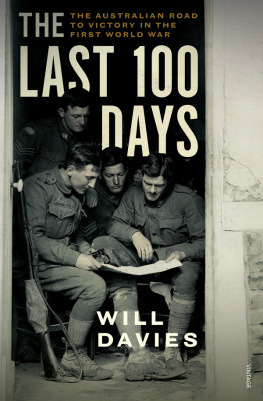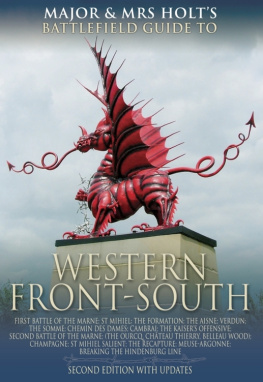

Published by Zebra Press
an imprint of Random House Struik (Pty) Ltd
Reg. No. 1966/003153/07
Wembley Square, First Floor, Solan Road, Gardens, Cape Town, 8001
PO Box 1144, Cape Town, 8000, South Africa
www.zebrapress.co.za
First published 2014
Publication Zebra Press 2014
Text Chris Schoeman 2014
Cover photograph: courtesy of Colonel Piet Schoeman
All rights reserved. No part of this publication may be reproduced, stored in a retrieval system or transmitted, in any form or by any means, electronic, mechanical, photocopying, recording or otherwise, without the prior written permission of the copyright owners.
PUBLISHER: Marlene Fryer
MANAGING EDITOR: Robert Plummer
EDITOR: Bronwen Leak
PROOFREADER: Mark Ronan
COVER AND TEXT DESIGNER: Jacques Kaiser
TYPESETTER: Jacques Kaiser
INDEXER: Sanet le Roux
Set in 11 pt on 15.5 pt Adobe Caslon
Printed and bound by Paarl Media, Jan van Riebeeck Drive, Paarl, South Africa
ISBN 978 1 77022 676 0 (print)
ISBN 978 1 77022 677 7 (ePub)
ISBN 978 1 77022 678 4 (PDF)
Contents
Preface
Y EARS AGO I had the privilege of listening to the World War I tales of William Thorne, then an old man and one of the few South African survivors of the famous Battle of Delville Wood, when only some 750 of the 3 153 men who had entered the wood mustered when the brigade was finally relieved. He told me about the South Africans traumatic campaigns in Flanders and on the Somme, of the hell of Delville Wood when he was a lad of just nineteen and of how his brother was shot dead next to him at Gouzeaucourt. Tears flowed down his cheeks as he spoke, as he relived the horror of that time like it were yesterday.
William Thorne is just one of many South African soldiers or Springboks, as they were called who fought on the Somme. The Somme Chronicles is an attempt to tell their story, in their own words, using the letters they sent to family back home and the memoirs they later recorded. It is a story of long days in cold muddy trenches, of hunger and thirst, of misery and suffering, of utter exhaustion and of death. But it is also a story of survival against heavy odds, of tremendous bravery, of wilful sacrifice and of unparalleled camaraderie. It is a story of truly courageous South Africans.
Some of these soldiers appear in the cover photograph of this book. It shows them shortly before they went into Delville Wood when there was still a wood. A special word of thanks to Colonel Piet Schoeman of Waterval-Boven for his kind permission to use it (as well as others in the photo section). The photograph originally belonged to his great-step uncle, Private Philippus P.J. Grobler (born 21 June 1895), one of the men in the group. Grobler was wounded during the battle, and in the chaos and confusion was left for dead. He was reported as missing in action, but was found by a relieving force and sent to England to recuperate. Sadly, Grobler died while returning to South Africa when the ship he was sailing on was torpedoed and sank on 12 September 1918.
A word of thanks also to the staffs of the Cape Archives, the SA Library, the Special Collections J.S. Gericke Library (Stellenbosch University), the SA Centre for the Netherlands and Flanders (SASNEV) and the Oudtshoorn Museum, and others who assisted me during my research.
This year, 2014, marks the 100th anniversary of the outbreak of that dreadful war, that only ended with the armistice on 11 November 1918. During those years, hundreds of thousands of soldiers on both sides suffered unspeakable trauma, agony and hardship. This book is dedicated to them.
CHRIS SCHOEMAN
APRIL 2014
The Somme in July 1916

Source: John Buchan, The Battle of the Somme
Longueval and Delville Wood

Source: John Buchan, The History of the South African Forces in France
The Butte de Warlencourt

Source: John Buchan, The History of the South African Forces in France
The Battle of Arras

Source: John Buchan, The History of the South African Forces in France
The Third Battle of Ypres

Source: John Buchan, The History of the South African Forces in France
Marrires Wood

Source: John Buchan, The History of the South African Forces in France
Messines Ridge

Source: John Buchan, The History of the South African Forces in France
Mount Kemmel

Source: John Buchan, The History of the South African Forces in France
Introduction
I N THE EUROPEAN summer of 1916, a few thousand South African men found themselves in muddy trenches along the Somme River in France. They were there out of choice, having volunteered to sail across the sea to fight in the Great War with the British Expeditionary Force on the Western Front of Europe. Fired with patriotism, at first they could not wait to get there, but before long they must have wondered what they had got themselves into, as their world shrank to mud and filth, hunger, thirst and exhaustion. The continual crack of bursting shells was a stark reminder that death was their constant companion.
It was a truly dramatic and devastating chapter in twentieth-century history. From Longueval to Cape Town, the war touched the lives and homes of millions of people around the globe, and would never be forgotten by those who lived through its horrors.
The global conflict centred in Europe and commonly known as the Great War broke out on 28 July 1914 and lasted for more than four years, until 11 November 1918. On opposing sides were the Allied Powers, based on the Triple Entente of the United Kingdom, France and Russia, and the Central Powers of Germany and AustriaHungary. These alliances were expanded as more nations entered the fray, with Italy, Japan and the United States joining the Allies, and the Ottoman Empire and Bulgaria joining the Central Powers.
By the end of the First World War, the Allies had mobilised almost 43 million people, while the Central Powers had mobilised just over 25 million. A staggering figure of nearly 10 million combatants were killed.
Underlying the causes of the war was a resurgence of imperialism, but one immediate trigger was the assassination of the heir to the Austro-Hungarian throne, Archduke Franz Ferdinand of Austria, on 28 June 1914 in the Bosnian capital of Sarajevo. He and his wife, Sophie, Duchess of Hohenberg, were shot dead in their motorcade by Bosnian Serb Gavrilo Princip, one of a group of six assassins that included five Serbs and one Bosnian Muslim. During the month that followed, the Allied and Central powers were involved in desperate diplomatic negotiations. Austria-Hungary firmly believed that Serbian military officers of the so-called Black Hand were involved in the plot, and served Serbia with the July Ultimatum consisting of ten demands, intentionally made unacceptable in the hope of provoking war with Serbia. When Serbia agreed to only eight, AustriaHungary declared war on 28 July. The Russian Empire rallied behind Serbia and started partial mobilisation the very next day.
Next page






















